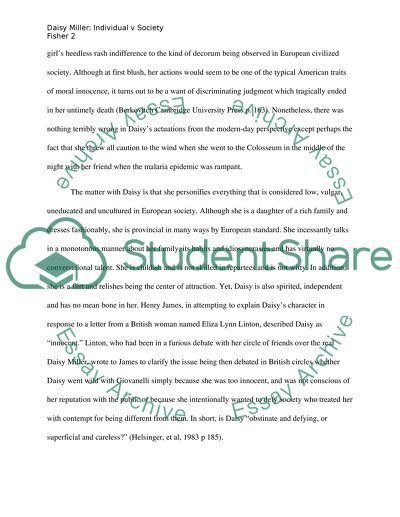Cite this document
(Henry James Story Daisy Miller: the Individual and Old Society Case Study, n.d.)
Henry James Story Daisy Miller: the Individual and Old Society Case Study. Retrieved from https://studentshare.org/literature/1550547-individual-vs-society-on-daisy-miller
Henry James Story Daisy Miller: the Individual and Old Society Case Study. Retrieved from https://studentshare.org/literature/1550547-individual-vs-society-on-daisy-miller
(Henry James Story Daisy Miller: The Individual and Old Society Case Study)
Henry James Story Daisy Miller: The Individual and Old Society Case Study. https://studentshare.org/literature/1550547-individual-vs-society-on-daisy-miller.
Henry James Story Daisy Miller: The Individual and Old Society Case Study. https://studentshare.org/literature/1550547-individual-vs-society-on-daisy-miller.
“Henry James Story Daisy Miller: The Individual and Old Society Case Study”, n.d. https://studentshare.org/literature/1550547-individual-vs-society-on-daisy-miller.


